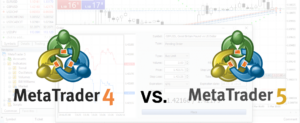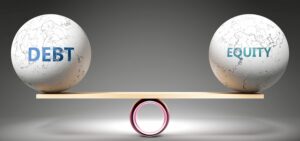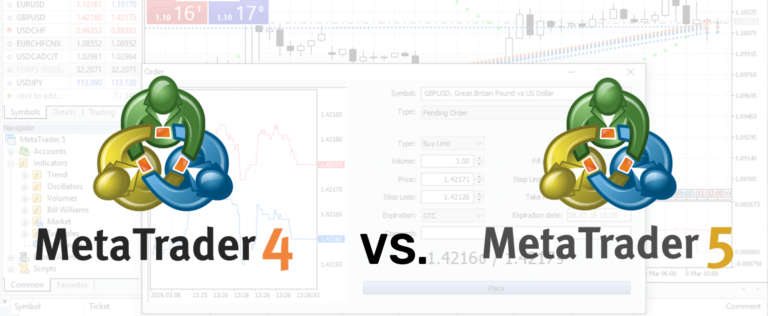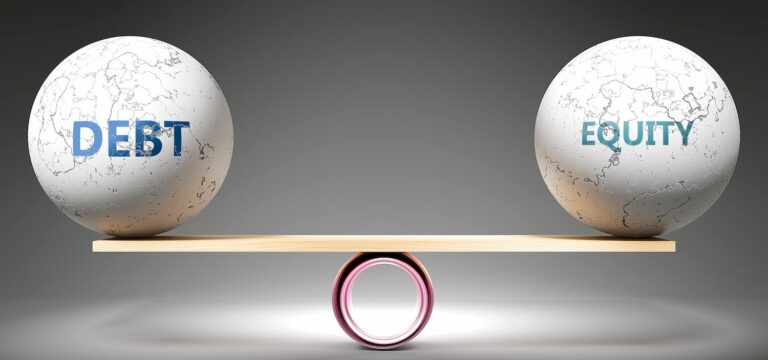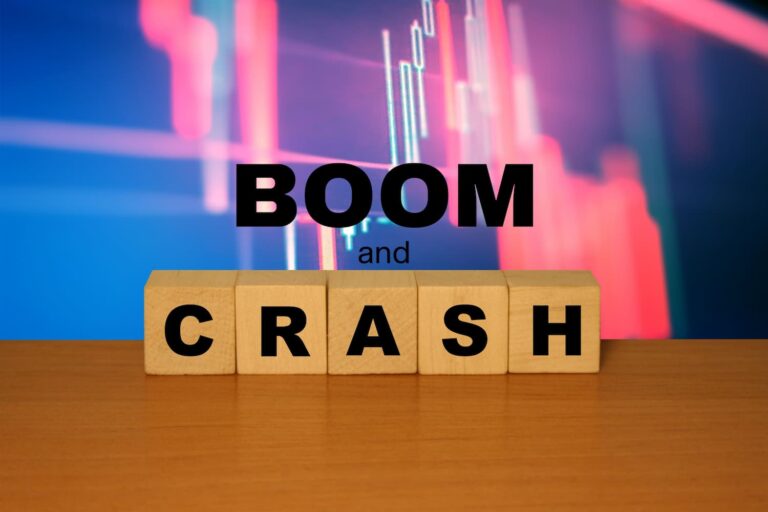Updated on June 2023 by Sharon Lewis.
As traders, it is important to have a grasp of the largest companies in the world and have some idea of their operations. In this article, we will look specifically at the ten largest US companies. These will be some of the most traded companies in the world, so having a good knowledge of them is vital to creating opportunities for us as traders.
In this article, we will look at:
Why does market capitalisation matter?
There are multiple ways to measure the size of companies, ranging from their sales revenue to profits and even their number of employees or market share. For the purposes of this article, we will use market capitalisation as our measure. This is the market value of a publicly traded company’s outstanding shares, so calculated by multiplying the number of outstanding shares by the share price. Market capitalisation shows the equity value of a company and can be seen as a gauge of public opinion on a company’s value.
10 Largest US Companies
| Rank | Company | Market Capitalisation ($billions)* |
|---|---|---|
| 1 | Apple | 2908 |
| 2 | Microsoft | 2577 |
| 3 | Alphabet (Google) | 1571 |
| 4 | Amazon | 1287 |
| 5 | NVIDIA | 1054 |
| 6 | Tesla | 825 |
| 7 | Berkshire Hathaway | 739 |
| 8 | Meta Platforms (Facebook, Instagram, Whatsup) | 728 |
| 9 | Visa | 435 |
| 10 | UnitedHealth | 419 |
*According to CompaniesMarketCap.com, as of 19/06/2023
Most of these companies you will likely recognise and will consume many of their products and services. We can see that five of these firms breach the one trillion-dollar mark, with NVIDIA breaking into the top 5 on the back of rising AI demand. At the same time, all firms that have made the list are worth over $400 billion. The list is clearly dominated by technology companies.
1. Apple (AAPL)
Taking the number one spot on our list is Apple, being the only US company with a market capitalisation of nearly $3 trillion. As you will be aware, Apple is a hardware and software developer that innovates and develops all kinds of technology and operating systems, specifically consumer technology such as smartphones and computers.
Apple was founded in 1976 by Steve Jobs, Steve Wozniak, and Ronald Wayne, going public in 1980, finding success through the development and production of its early computers. In 1985 power struggles between executives led Wozniak to step back and Jobs to resign, founding NeXT. This led to a rough period for Apple through the 1990s as they lost market share to Microsoft, nearing bankruptcy in 1997 when they purchased NeXT and brought Jobs back. Over the next few decades, Apple began to dominate, powered by the innovation of new products such as the iPod, iPhone, iMac, and its latest, the Apple Vision Pro.
Apple is often listed as one of the most valuable brands in the world, benefiting from the high level of brand loyalty it has established with its consumers through its high quality, easy to use products powered by their own operating systems. One key part of Apple’s strategy that has allowed it to grow so substantially is its purchase of small tech companies, such as Beats Electronics, Anobit Technologies, Dialog Semiconductor and NeXT along with multiple others. These allow Apple to easily integrate elements from these companies into their product
The CEO of Apple is Tim Cook, taking over from Steve Jobs in 2011. The company employs over 164,000 people and has 526 retail stores worldwide as of 2022.
2. Microsoft (MSFT)
Another tech giant, Microsoft, is the second largest company in the US. They develop and provide software and technological services, such as their computer operating system Windows, along with cloud solutions, the search engine Bing, and applications like Microsoft 365. They also produce some hardware technology like their personal computer and other consumer electronics. In recent years, Microsoft has also looked to invest in and develop high-demand markets such as artificial intelligence, mixed reality, and other related areas. In fact, it invested heavily in the AI research lab OpenAI and has built AI-powered tools into its Bing search engine and Edge browser.
Much like Apple, Microsoft has made multiple corporate acquisitions over the years in order to expand. Microsoft tends to have a slightly different approach, having purchased some much higher-valued companies, such as LinkedIn and Skype. These companies have then been run by Microsoft, continuing in the same markets, as opposed to being integrated into the product line like for Apple.
The current Microsoft headquarters is in Redmond, Washington, in the US, with the company being founded in 1975 by Bill Gates and Paul Allen. Steve Ballmer replaced the former CEO in 2000 and proceeded to expand the company towards a “devices and services” strategy. They produced their first personal computer in 2012 and even acquired Nokia’s devices and services division to produce their first mobile phone.
3. Alphabet (GOOG)
Alphabet Inc, formerly Google LLC, comes in third on our list. The company was founded in 1988 simply as a search engine company and did not go public until 2004. Google has changed how the public views information and has dominated the search engine market while expanding into other technological arenas.
In 2015, Google was restructured to become Alphabet, a technology conglomerate, becoming a parent company and unifying the company’s widening ventures and product lines. The goal of this, according to CEO at the time, Larry Page, was to improve “transparency and oversight” of the company’s actions.
Google manages multiple digital platforms and services, with the most prominent being its search engine, but also its internet browser Chrome, YouTube, Android, Gmail, and other internet services. Alphabet also has an “Other Bets” division comprising early-stage businesses, most of which produce their revenue from some form of technological service. The company competes heavily with Microsoft in the domain of artificial intelligence and, earlier this year, launched a generative artificial intelligence chatbot, Bard. They have looked to innovate in rising industries as well, investing heavily in self-driving vehicles through Waymo and the Stadia cloud gaming system.
4. Amazon (AMZN)
The fourth largest company by market cap in the US is Amazon. When it was founded by Jeff Bezos in 1994, Amazon was an online marketplace solely for books. In the years since, the business has expanded significantly in not just size but also the diversity of products it provides. Today, it is a global leader in e-commerce, with its online marketplace providing a range of products from electronics to apparel and even food and furniture, mostly supplied by third-party merchants.
Amazon has undoubtedly changed how consumers go about making purchases and is now the largest retailer in the world outside of China. Recently, the company has expanded further to be a major player in cloud computing, providing online services to many consumers, such as its streaming and music subscription services, and is even investing in artificial intelligence.
Amazon’s headquarters is based in Seattle, Washington, with CEO Andy Jassy leading the company since he took over the role from founder Bezos in 2021.
5. NVIDIA
NVIDIA is a leader in the world of graphics processing units (GPUs), powering industries ranging from gaming to artificial intelligence. The company is at the forefront of visual interfaces, data processing and deep learning frameworks that drive advancements in machine learning and AI.
Founded in 1993 by Jensen Huang, Curtis Priem and Chris Malachowsky, the California-headquartered company went public in 1999. It makes a majority of its revenue from sales of its GPUs, but NVIDIA is also known for its APIs, software products and other semiconductors. With booming demand for AI products, the company’s shares have surged 200% as of June 2022. It grossed nearly $27 billion in revenues during 2022.
6. Tesla (TSLA)
Next on our list and the world’s largest auto manufacturer by market capitalisation is Tesla. The company was founded in 2003 by Marc Tarpenning and Martin Eberhard, with Elon Musk investing in the company and becoming chairman the year after. Tesla’s name is from the physicist Nikola Tesla and the company was taken public in 2010, with Musk as the largest shareholder to this day.
Originally, Tesla was a producer of fully electric vehicles, but under Musk’s guidance has also moved into related markets, such as providing vehicle services and charging stations. More recently, the company has been at the forefront of developing and innovating advanced energy storage and energy generation products. These range from home to grid-scale, with products such as solar panels and solar roof tiles.
Musk states the goal of Tesla is to help facilitate a quicker move to sustainable transport and energy via electric cars and solar energy. The business is expanding, with a record 1.31 million cars delivered in 2022.
7. Berkshire Hathaway (BRK-B)
Berkshire Hathaway is unlike any of the companies seen previously on our list. This is because it is a multinational conglomerate holding company, meaning that its main business is to hold a controlling interest in securities of other companies in different industries and across nations.
The company, which is known for its focus on value stocks, was founded in 1839 and became famous through the savvy investing of Warren Buffett, who acquired the company over fifty years ago. He diverted cash flows away from the main business to investments in others, originally buying up troubled businesses and helping turn them around. He continues to play a key role as the company’s chairman and CEO to this day.
As of 2022, Berkshire Hathaway wholly owns many large businesses such as GEICO, Fruit of the Loom, Dairy Queen, and Duracell. It also holds significant minorities in other companies such as The Coca-Cola Company (9.25%), American Express (20.29%), Bank of America (12.96%), Apple (5.82%) and Kraft Heinz Company (26.5%).
8. Meta Platforms (META)
Formerly known as Facebook, Meta Platforms was founded in 2004 by four students still studying at Harvard University. One of these founders, Mark Zuckerberg, is still the CEO of the company. Meta is the last of the Big Five American information technology companies, with the other four, Apple, Microsoft, Alphabet and Amazon, appearing at the very top of this list. Its original business, the Facebook platform, is the largest social media network in the world, from which it has expanded, creating and purchasing other networking apps, such as Instagram, WhatsApp, and Messenger.
The main purpose of Meta’s social media networks is to interact with friends and family online. However, in the present day, they are often also used by businesses and political organisations to reach a large audience. Ad revenues drive up to 98% of its revenues, reaching over $116 billion in 2022.
9. Visa (V)
Visa is different from typical user-facing financial services companies in that it does not issue its cards, set rates, or extend credit to consumers. Instead, they provide their electronic payment products to financial institutions, which then use these to offer consumers debit, credit, or prepaid programs, with the rates and credit set.
Visa was launched originally as BankAmericard by Bank of America in 1958. It was a credit card program launched as a response to their long-time competitor Master Charge, now Mastercard. In 1970, the Bank of America gave up control of the program, which was subsequently absorbed into a consortium with other issuing banks and renamed Visa in 1976.
10. United Health (UNH)
UnitedHealth Group comes in at the tenth spot on our list. It is a managed healthcare and insurance company aiming to provide more affordable and higher quality healthcare for its customers.
The company was founded as Charter Med Incorporated in 1974 by Richard Taylor Burke and reorganised into the United Health Care Corporation in 1977. Today, it is the world’s largest healthcare company in terms of revenue, creating this from premiums it receives from risk-based products along with the sale of healthcare products, fees from services, and investments.
UnitedHealth Group has over 130 million customers worldwide and employs over 300,000 people.
We hope you have come away more knowledgeable about the top 10 largest US companies by market capitalisation.
Learn more about the biggest companies in different countries and regions around the world by reading our other articles:
- Top-10 largest non-US companies by market capitalisation
- 10 Biggest UK-based Companies
- Africa’s Top-10: Leading Companies by Market Capitalisation
- Top 10 Largest Latin American Companies
- Economic Powerhouses: Trillion-Dollar Companies Club
Also, we recommend you to find out with our Trader’s Guide to the 10 Major Global Economies by GDP.
Feeling ready to trade yet? The share prices of publicly traded companies are constantly on the move, providing ample opportunity for traders to take advantage of market movements. Trade these movements today on the MT4 platform. It’s effortless, beginner friendly, and used by traders across the world. Trade on MT4 with your Hantec Markets trading account today.



